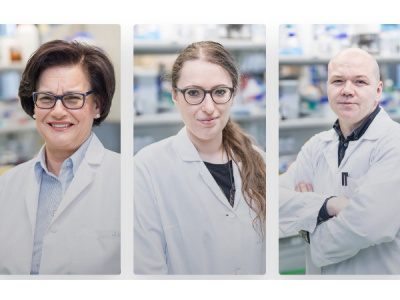
Destroying bacteria using plasma and thus protecting cultivated and ornamental plants from disease is the main task of the invention entitled 'Method of deactivating antibiotics in aqueous solutions', developed by scientists from the University of Gdańsk and the Wrocław University of Technology. The Polish Patent Office has just issued a decision to grant a patent for the invention.
The subject of the invention, which was previously awarded the Grand Prize in the Eureka Competition, is a method of deactivating antibiotics from aqueous solutions using a direct current atmospheric pressure glow discharge (dc-APGD) in contact with a flowing liquid in a continuous flow system.
This is in response to the losses recorded in the agricultural and horticultural sectors due to pathogenic bacteria on plants.
- 'The invention makes it possible to deactivate antibiotics before they are released into the environment and, as a result, to reduce the spread of antibiotic resistance, among others, among bacteria pathogenic to humans or to livestock and farm animals,' - says dr Agata Motyka-Pomagruk from the Department of Plant Protection and Biotechnology of the Interuniversity Faculty of Biotechnology of the UG and MUG.
'Micro lightning striking the river'
The solution used in the invention and activated through plasma destroys pathogenic bacteria affecting cultivated and ornamental plants, thus contributing to their protection. The invention uses a glow discharge generated at atmospheric pressure in contact with a liquid (a type of non-thermal atmospheric plasma). The plasma, as an ionised gas, exhibits unique properties, mainly due to the fact that it is a source of reactive oxygen and nitrogen forms. The resulting 'active post-plasma solution' can be applied to plants in the form of spraying, fogging or irrigation.
Describing the device, dr hab. inż Piotr Jamróz from PWR advised imagining a flowing river and micro lightning striking it, as this is what the electrical discharge generated on contact with the liquid looks like.
- 'We obtain cold atmospheric plasma by generating discharges at atmospheric pressure. Thanks to it, among other things, reactive forms of oxygen and nitrogen, radicals and UV radiation, that can inactivate antibiotics. They break them down into simpler compounds and then are degraded. Eventually, they are transformed into carbon dioxide and water,' - says dr hab. inż Piotr Jamróz from PWr.
The plasma system used in the device can be used by both wastewater treatment plants and the pharmaceutical or agricultural industries.
Authors of the invention
Among the authors of the invention are three scientists from UG: dr Agata Motyka-Pomagruk, dr Wojciech Śledź and prof. dr hab. Ewa Łojkowska (project manager on the part of UG), as well as scientists from the Faculty of Chemistry of Wrocław University of Technology: dr hab. inż. Anna Dzimitrowicz, prof. dr hab. inż. Paweł Pohl, mgr inż. Tymoteusz Kliś and dr hab. inż. Piotr Jamróz (project manager on the part of PWr).
